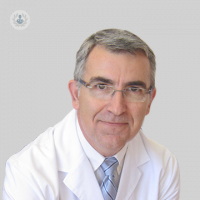Wrong night's rest? Sleep apneas have solutions
Written by:The prevalence of sleep apnea in the population is approximately 2% in women and 4% in men.
 One skilled in clinical neurophysiology can detect sleep apnea, which is characterized by respiratory pauses that occur during sleep. These episodes are usually takes 10 to 30 seconds (although some may persist for more than a minute).
One skilled in clinical neurophysiology can detect sleep apnea, which is characterized by respiratory pauses that occur during sleep. These episodes are usually takes 10 to 30 seconds (although some may persist for more than a minute).
These pauses in breathing often associated with a decrease in oxygen saturation in the blood and usually end with a thunderous snoring when, after the progressive increase in the inspiratory effort, obstruction eventually sag and air bursts back strongly in the respiratory tract. These pauses of apnea are repeated again and again throughout the night and are usually accompanied by a "arousal" or arousal. These arousals (often unaware) result in a superficial, fragmented sleep and, consequently, little refreshing.
As a result of this bad break, is often the next day, an increase of daytime sleepiness and increased fatigue, irritability, mood swings, headaches, memory problems appear ...
Sleep apnea symptoms
The first diagnostic suspicion of a possible picture of sleep apnea usually comes in most cases, the bed partner, it becomes a privileged observer of the existence of these "respiratory arrest" during sleep.
At other times, the suspicion of the disease is set to the primary care consultation, either by the patient that counts, or by certain test used as a screening test for sleep apnea.
One such test is the Berlin Questionnaire, based on a series of questions that revolve around snoring, sleepiness, obesity, hypertension, etc.
Preventing sleep apnea
- Losing weight: Generally, weight loss is often accompanied by a decrease in the number of apneas and improved sleep efficiency.
- Avoid alcohol.
- Do not consume sleeping pills, as they can relax more than normal muscles of the upper airways, making it easier for more apneas occur.
- Stop smoking, because it can worsen sleep apnea by its irritant effect.
- Sleeping on your side. Most apneas are positional type. In face up (supine) position is the time when most of apneas often occur because this position favors the narrowing or collapse of the upper airways.
Treatment of sleep apnea
- The most common treatment for sleep apnea is usually the use of CPAP devices, Bi-PAP or AutoCPAP, which basically consists in the administration of positive pressure air through a nasal mask connected to a compressor.
- Also available are various intraoral orthotics or Mandibular Advancement Devices (AMD) These intraoral devices usually maintain the advanced jaw few millimeters during sleep, thus facilitating the passage of air through the upper airway. These devices usually advised only in cases of mild sleep apnea or mild-moderate degree.
- Lately they have appeared on the market devices to treat positional sleep apnea, useful when apneas occur only or mainly during supine position (sleeping on your back). These devices generate a small vibration when sleeping to detect that you are in this position, indicating the patient the convenience of a change in posture.
- Another novel therapy in the treatment of obstructive apneas is the introduction of a hypoglossal nerve stimulator (similar to a pacemaker device).
In some patients, especially when there is a craneomandibular malformation or anatomic obstruction, it can also use the oropharyngeal and jaw surgery. The treatment of choice in each case will vary depending on the origin and severity of apneas.
Treatments for sleep apnea frequently used are usually the CPAP devices and intraoral orthopedic devices (prostheses DAM).



